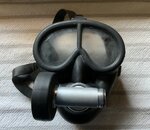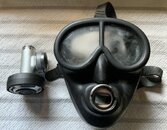Hold on. Why would someone blackout in the first place? Let's address the root cause here instead of trying to work around it by introducing additional risks and convolutions with a FFM and gas switching block.
The Thai cave rescue was a unique circumstance with little relevance to sport diving. In regular ocean tech diving, a blackout is unlikely to be survivable regardless of what kind of mask or regulator arrangement you have. I mean we practice rescuing an unconscious diver by managing the airway and bringing them up in a controlled ascent, but the actual odds of success are pretty low.
Sure I would not argue with any of that.







